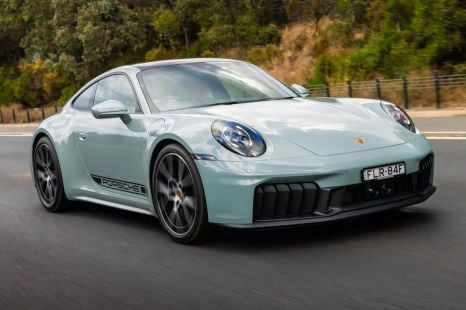

Alborz Fallah
2025 Porsche 911 T-Hybrid review
5 Months Ago
At first glance it's not immediately attractive, but you'll warm to the 2 Series Gran Coupe.
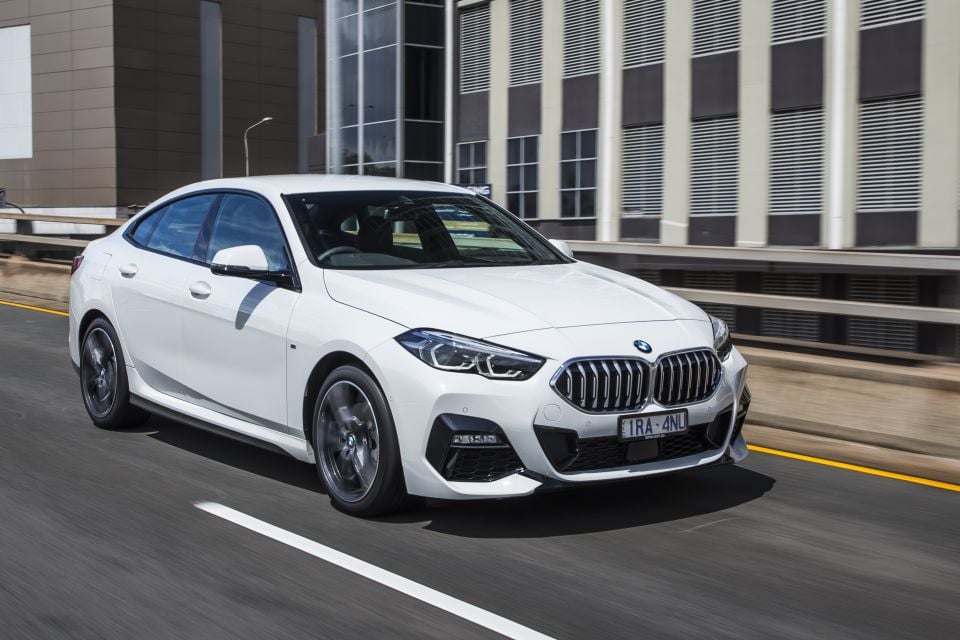
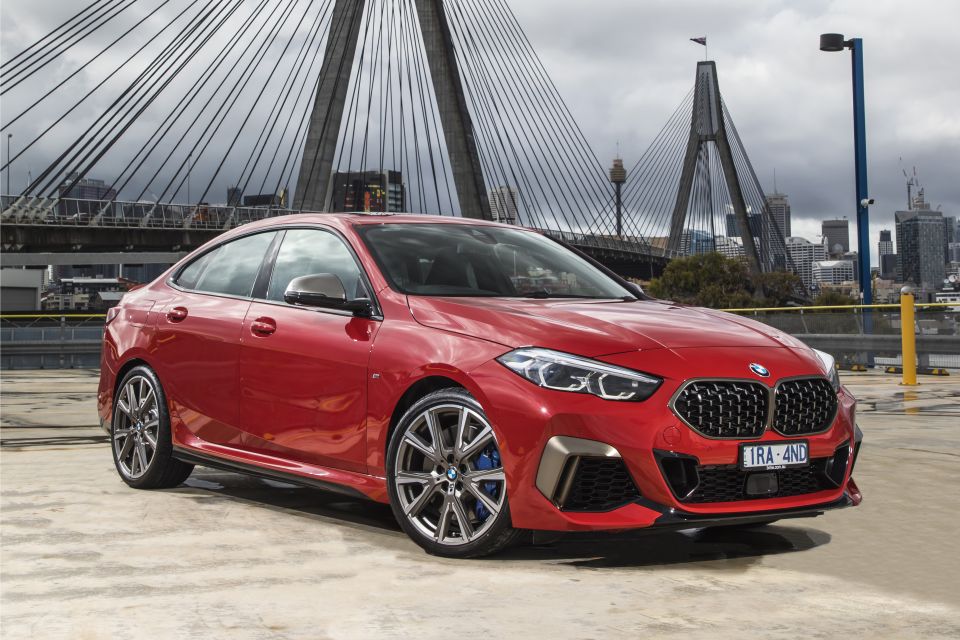

Senior Road Tester
New from
$47,990
excl. on-roads

Senior Road Tester
New from
$47,990
excl. on-roads


Senior Road Tester
New from
$47,990
excl. on-roads

Senior Road Tester
New from
$47,990
excl. on-roads
Quickly see how this car stacks up against its competition. Select any benchmark to see more details.
Where expert car reviews meet expert car buying – CarExpert gives you trusted advice, personalised service and real savings on your next new car.
The earliest description of a coupe can be found in online version Merriam-Webster dictionary. It simply says “a four-wheeled closed horse-drawn carriage for two persons inside with an outside seat for the driver”.
Which begs the question, how did we get to the point of classifying a four-door sedan with a sloped roof as a coupe?
It still confuses me, more than a decade after Mercedes-Benz gave us the CLS, followed by the CLA – not to mention giant four-door SUVs also carving out niches for Mercedes and its German rivals.
BMW jumped on the bandwagon in 2012 with the 6 Series Gran Coupe – only it too wasn’t a coupe, but a four-door sedan with a sloping roof.
This from an iconic manufacturer of some of the world’s most beautiful coupes (actual ones!) like the 327 Coupe of the ’30s, which paved the way classic beauties such as the E9 of 1973, the 3.0 CS, and more potent 3.0 CSL.
Now that was a good looking two-door.
Later models like the original 8 Series were just as stunning, and at the same time showcased the technology without skimping on luxury.
With all that said, sales have been good for BMW Gran Coupe models, with more than 400,000 sold. Expect that number to grow significantly with the arrival of the 2 Series Gran Coupe you see here, though.
It’ll go head-to-head with the Mercedes-Benz CLA Coupe in almost respect except price.
That’s where the BMW becomes a no-brainer for those not sold on a particular brand, because even the entry-level model holds an $11,000 advantage over the Mercedes-Benz.
Pricing for the 2 Series GC starts at $47,990 plus on-roads for the front-wheel drive 218i, while the potent all-wheel drive M235i is yours for $69,990 before on-road costs.
By way of comparison, the Mercedes-Benz CLA kicks off at $59,500 plus on-roads, albeit with a more powerful engine.


Mercedes-Benz buyers looking to step up CLA Coupe ladder will need to hand over $83,400 before on-road costs for the top-shelf A35 4Matic, which is still down on pulling power by 50Nm compared to the 2 Series.
There isn’t much in it in the 100km/h sprint, with the Mercedes holding a slight edge.
I’m not completely sold on the styling, although I don’t dislike it either. The tapered roofline and frameless windows go a long way to enhancing the design, and there’s no denying this Gran Coupe has a muscular stance with its deep fascia and large air intakes.
No question, the BMW 2 Series Gran Coupe is a niche play. It does, however, slot nicely between the 1 Series and 3 Series models. At 4526mm long, it’s 207mm longer than the 1 Series with which it shares a wheelbase, but 183mm shorter than 3 Series.
Entry-level variants can look a bit soft in this premium segment, but the 218i gets the M Sport package as standard to spice things up.
However even on this base version, two exhaust tips (rather than the one) would balance it out more at the rear.
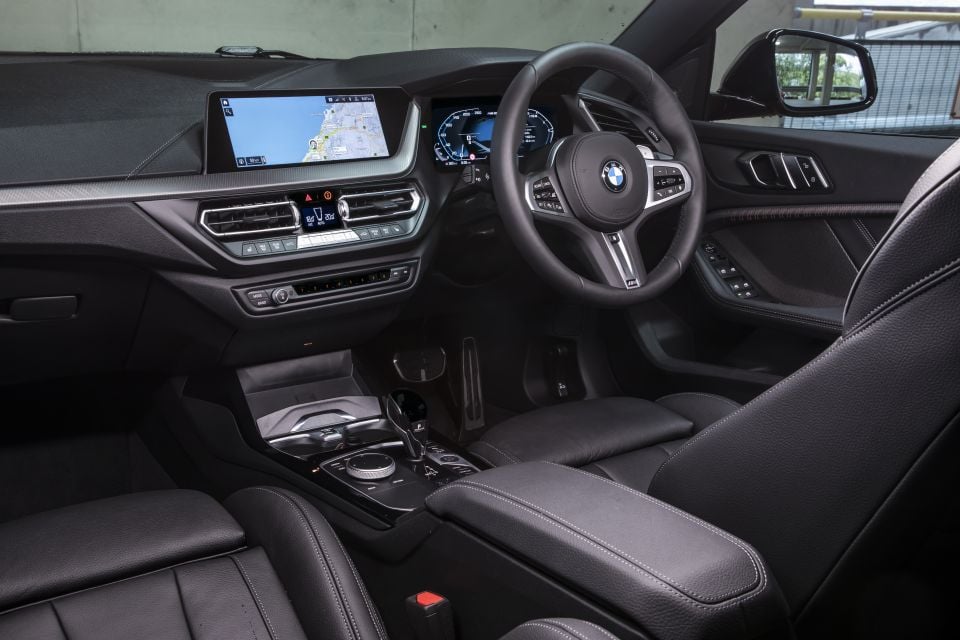
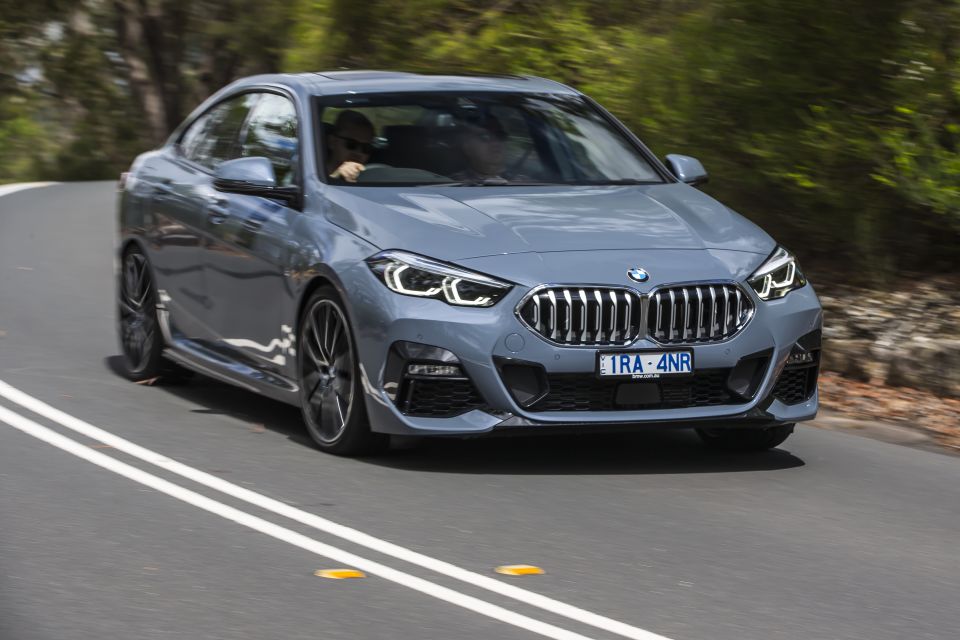
On the M235i? I can’t say I’m a huge fan of the twin rectangular tips on that car either. Call me old-fashioned, but give me fat circular pipes back there at the very least.
BMW’s current design language has been polarising for a while now, but after a few hours with the 2 Series at the launch I found myself warming to it. Either way, I’d categorise it as sharp rather than handsome.
The same can be said for the cockpit. All three premium Germans deliver the goods in this department with high-end fit, finish, and materials, each with its own unique execution and point of difference.
Mercedes-Benz has great infotainment tech with peerless widescreen displays, while Audi delivers a superb look and feel with knurled switchgear and high-quality metal accents. BMW is all about driver-centric cabins which exude quality, with a robust simplicity to their layout.
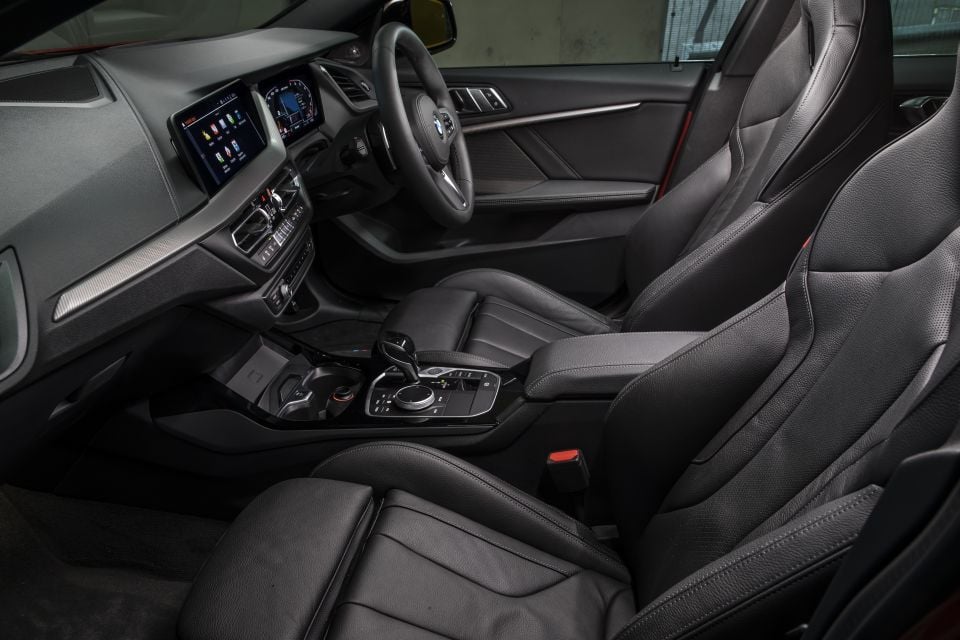
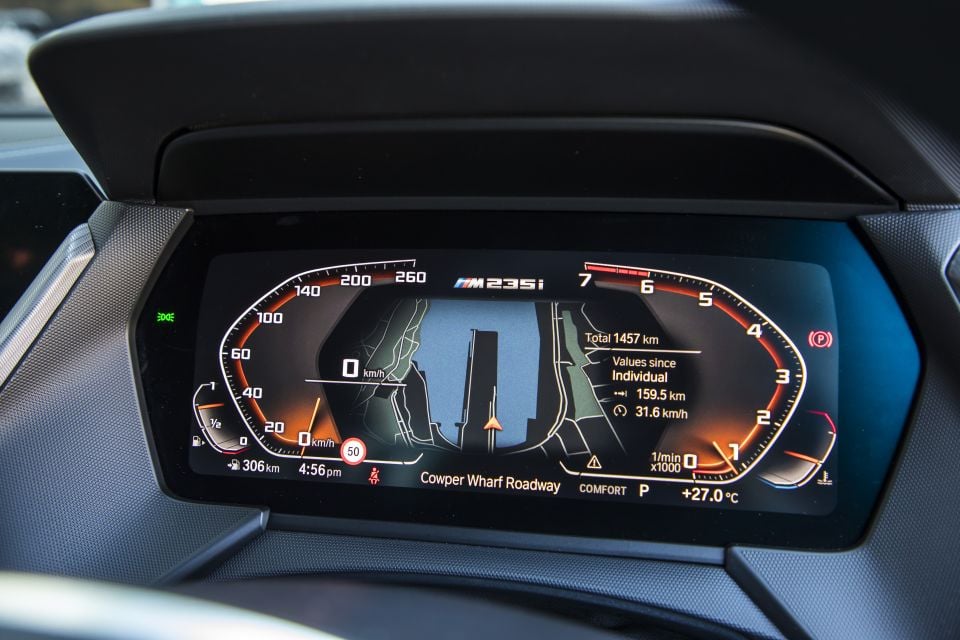
I’d argue technology and features now figure higher on buyer wish lists than design itself – and all OEMs have lifted their game significantly, which is why it’s no surprise BMW has thrown everything into the 2 Series Gran Coupe.
Top-shelf features like wireless smartphone charging, a 9.2-inch head-up display (one of the best in the business), and 10.25-inch high-resolution displays for the instruments and infotainment running the latest BMW OS7.0.
Other kit includes climate control (single-zone), LED headlights and front fog lights, DAB+ digital radio, and front/rear parking sensors with reversing assistant.
The 218i also gets the M Sport package as standard, which includes 18-inch alloy wheels, a bodykit, an M steering wheel, sports seats up front, and M Sport suspension that lowers the ride height by 10mm.
Our press car was fitted with the Enhancement Pack ($3400) which added Storm Bay metallic paint, a panoramic glass roof, and 19-inch lightweight wheels. It also featured the Comfort Pack ($2300), which bundles keyless entry with heated, powered front seats.
If you’re thinking about stepping up to the M235i with its $22,000 premium, there’s a stack of additional features including a limited slip differential and all-wheel drive. There’s also larger brakes, 19-inch lightweight forged wheels, the M Sport interior package, and a Harman/Kardon audio system.
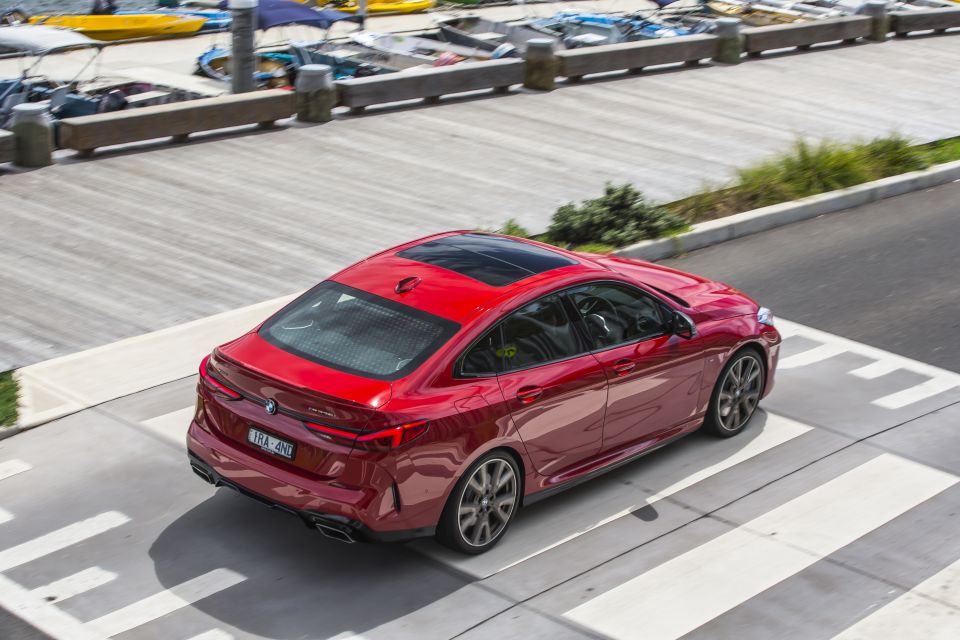
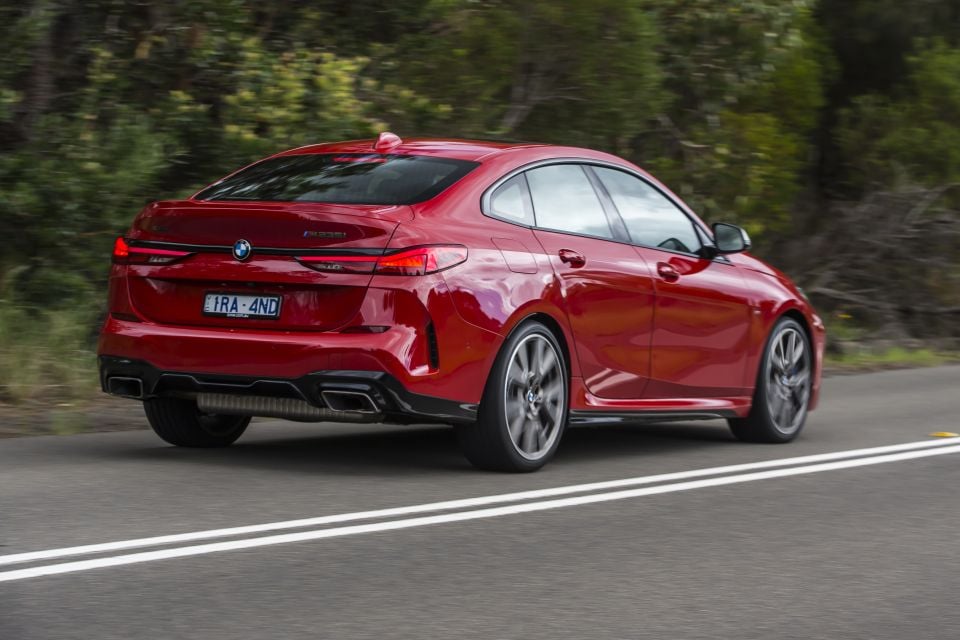
It also gets a rear spoiler, leather upholstery, adaptive LED headlights, keyless entry, and dual-zone air-conditioning in addition to the punchier engine.
Standard across the range is Driving Assistant which bundles a host of active safety features such as lane departure warning, lane-change warning, autonomous emergency braking, rear collision prevention, and speed limit information.
High-speed AEB isn’t standard, but it’s available across the 2 Series range as part of active cruise control package with stop/go – either individually for $850, or as part of the full-blown Driver Assistant package.
The 2 Series is yet to be crash tested in Australia and has such not yet received an ANCAP safety rating. Given it’s based on the same platform as the 1 Series, which is a five-star car, it’s logical to assume the 2 Series will also have a five-star rating.
You can always count on BMW to provide comfortable and supportive sports seats. In this case, the combination of faux leather bolsters and cloth inserts make for a contemporary look – although I still find the M Sport steering wheel is too thick for my kid-sized mitts.
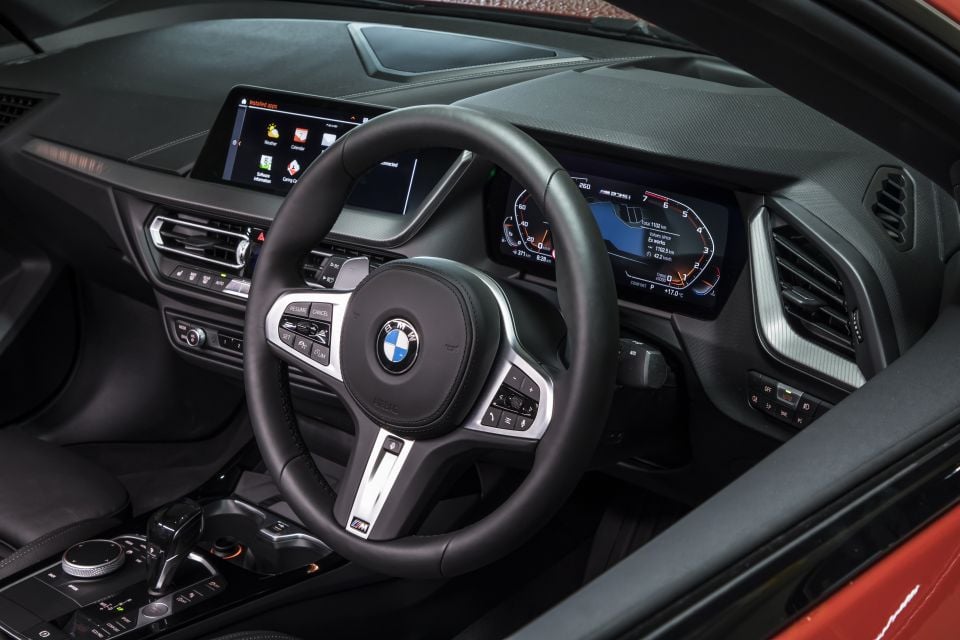
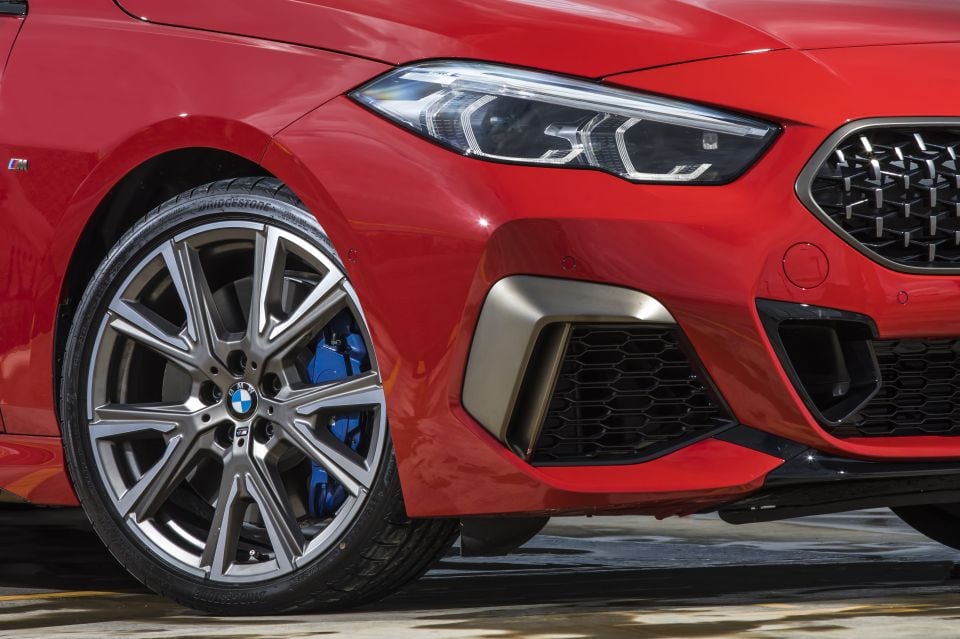
The combination of different materials and colours in the cabin is a good look and feel, while Beemer has also upped the quality of their switchgear to near Audi levels, so even the base 218i feels thoroughly premium throughout.
I know I’m nit-picking, but while the two widescreens more than do the job intended they seem ordinary next to the high-resolution, dual-screens offered in the Mercedes-Benz CLA.
On-board wireless charging is brilliant, but there’s also USB ports for those that prefer their phones wired in. I’m still using an iPhone 10 and it slots into the charger perfectly, and doesn’t move a millimetre if you hit super-sized speed bumps.
Importantly, the extra length of the 2 Series means there’s good decent room all round, especially in the rear. However, headroom will be problematic for taller passengers given that sloping roofline wipes off 14mm of headroom from the 1 Series.
Boot space is decent, with 430L at your disposal – 50L more than 1 Series, 50L less than the 3 Series.
Choosing the entry 218i Gran Coupe gets you a 1.5-litre twin-scroll turbocharged three-cylinder petrol engine mated to a seven-speed dual-clutch auto transmission. It makes 103kW of power and 220Nm of torque, put to the front wheels. It’ll go from 0-100km/h in 8.7 seconds, and uses 95RON premium fuel.
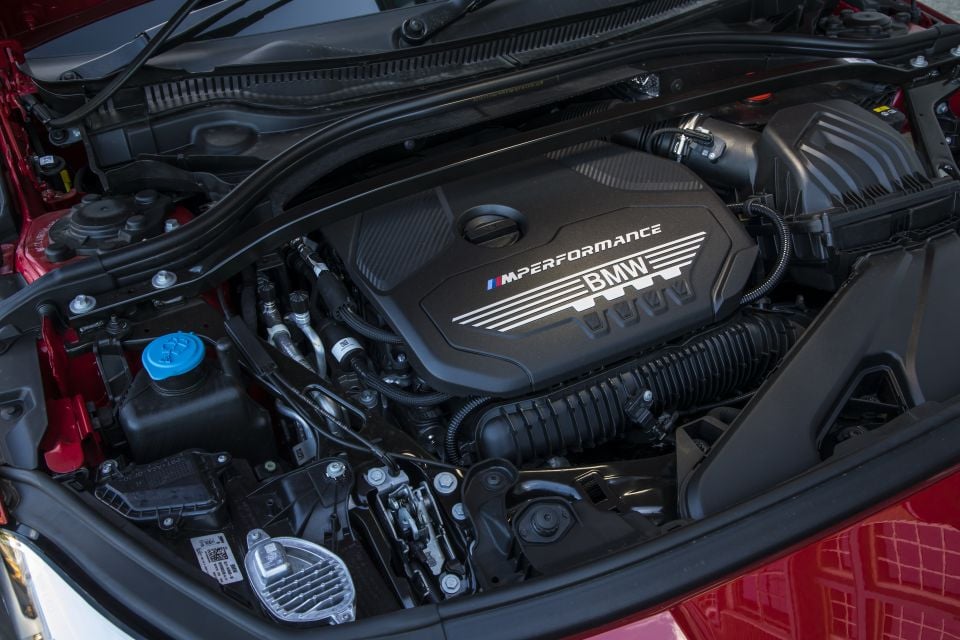
Stepping up to the high-performance M235i xDrive nets you BMW’s most powerful 2.0-litre four-cylinder engine to date. The turbocharged mill boasts 225kW of power and 450Nm of torque, sent to all four wheels with a 50/50 torque split.
It can sprint from 0-100km/h in 4.9 seconds using 98 RON premium fuel.
First cab off the rank for us was the 218i in a brilliant dark-grey metallic paint job with just enough black accents to really set this car off. It didn’t look like an entry-level car. Big tick.
It’s amazing how we all get carried away with performance numbers and 0-100 times, when in reality it counts for little in a commuter like the 218i.
What is important is the 1.5-litre turbo three-pot is unexpectedly quiet, and about as refined as it gets in this class. In the real world it’s an impressively versatile engine with adequate punch throughout the rev range.
If you need to get away from a set of traffic lights quickly, it also responds well to a heavy boot, and despite being equipped with a seven-speed dual-clutch transmission we couldn’t detect much in the way of low-speed hesitation in traffic.
It also feels solid and balanced through corners, with little in the way of body roll. There’s a good reason for that; there’s more stiffness thanks to enhanced body bracing and well as a multi-link rear suspension as standard fitment.
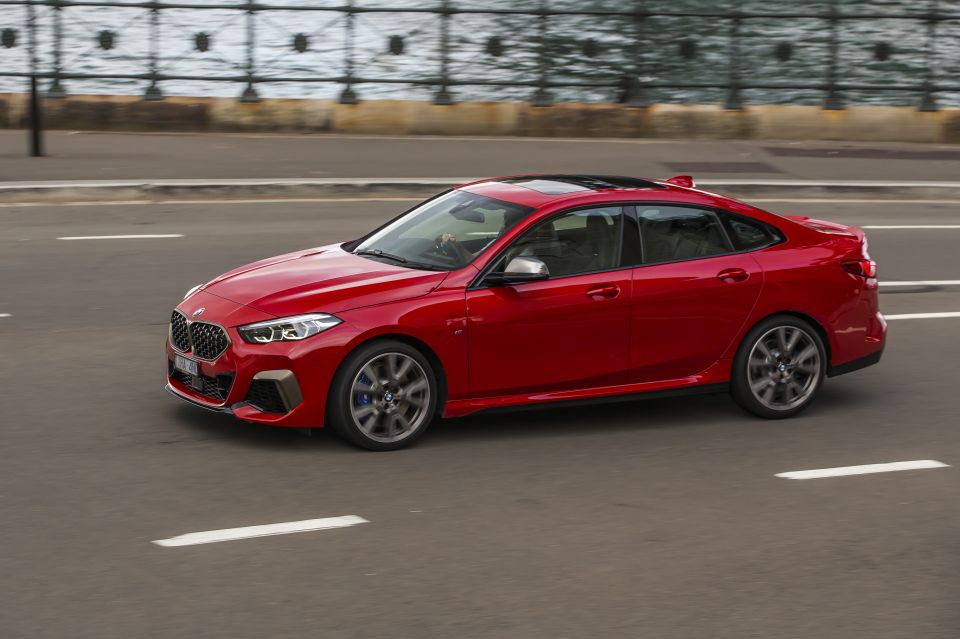
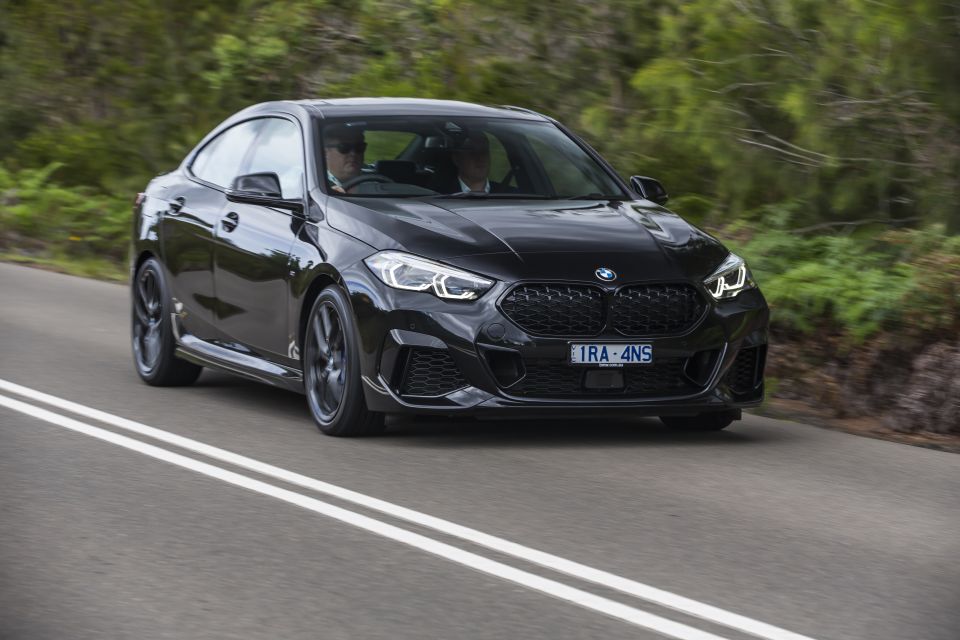
The steering is also quite light and quick to respond to inputs, but don’t expect a lot of feel. It’s more like a video game in that regard, although most people probably won’t give it a second thought.
Initial ride compliance is pretty good, even over speed bumps. And that’s riding on a set of optional 19-inch alloys (they look the goods) and M Sport suspension which lowers the ride height by 10mm. Let’s not forget the run-flat tyres with their harder sidewalls affect ride characteristics, too.
Get out for a blat on some well-worn b-roads, though, and the ride becomes a bit busy for my liking – to the point where it starts to bother you even over what I’d class as a decent surface. If it was me, I’d opt for standard suspension paired with 18-inch alloy wheels as the more comfortable option.
BMW rates combined fuel consumption for the 218i at 5.9L/100km, and even though we had scant regard for economy on the launch program consumption averaged out at 6.9L/100km.
Fuel consumption is naturally higher with the high-performance M235i, with a combined cycle rating of 7.6L/100km using 98RON premium unleaded.

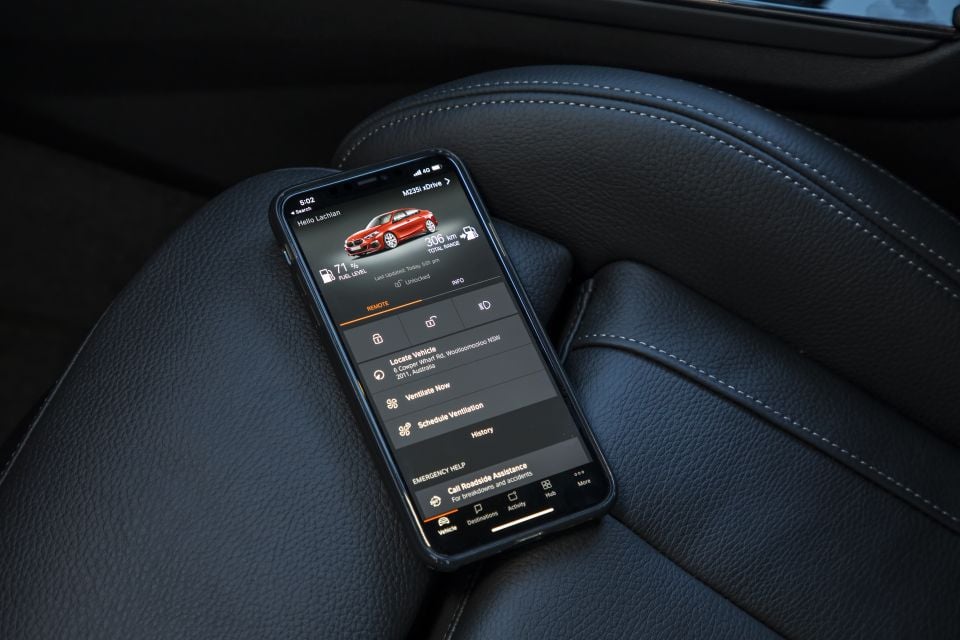
Hop into the M235i xDrive and, apart from the leather trim, M badging, and dual exhaust there doesn’t seem like a lot of difference between the two variants aesthetically.
It’s not until you fire up the 2.0-litre four and get a taste of the most powerful four-cylinder engine BMW has built do you start to appreciate difference between these two cars
There’s proper intent to be found in the exhaust note, even at idle, and it gets better as the revs rise.
Fortunately, our car swap from the 218i into the M235i was well away from the confines of suburbia, which meant we could get a proper taste of both performance and handling over mostly average road surfaces.
I was keen to have a of a crack through some of the more challenging bends, given the xDrive all-wheel drive has a 50/50 torque split working in concert with an anti-slip system called ARB and borrowed from the i3.
It effectively reins in wheel spin 10 times faster than it would normally by bypassing stability control.
The results are astounding, with what feels like unlimited grip across some incredibly sharp bends and at a very decent clip. You’d need a racetrack to explore the limits of this technology. That’s how effective it is.

Mind, it’s not just the magic of ARB at work here, but rather a suite of active technology including an electronically-controlled differential, dynamic yaw distribution, and brake-based torque vectoring to effectively silence understeer before it actually appears.
The M235i Gran Coupe isn’t perfect, though. There are a few chinks in its amour. Ride comfort in the 235i is fractionally better than its 218i sibling despite riding on 18-inch wheels.
It settles a tad faster thanks to its sharper suspension tuning and high-preload anti-roll bar mountings.
Frankly, you’d be mad not to hand over another $400 for the adaptive suspension, which mandates these same 18-inch wheels. There’s still no steering feel, though. It’s an art BMW seems to have lost these days, but I’m forever hopeful they’ll get their mojo back as it was part of the brand’s DNA for so long.
With many car companies increasing warranty periods to five or seven years with additional roadside assistance, BMW has said it’s sticking with three years.
That’s despite Mercedes-Benz going to five years. Lexus has four years, while Genesis has five. It’s something to consider in this premium segment.
BMW does offer capped-price servicing on the 2 Series Gran Coupe.
A five-year, 80,000km basic plan is $1389, while the Plus Plan costs $3676 and adds brake pad and disc replacement, and wiper blade rubbers.
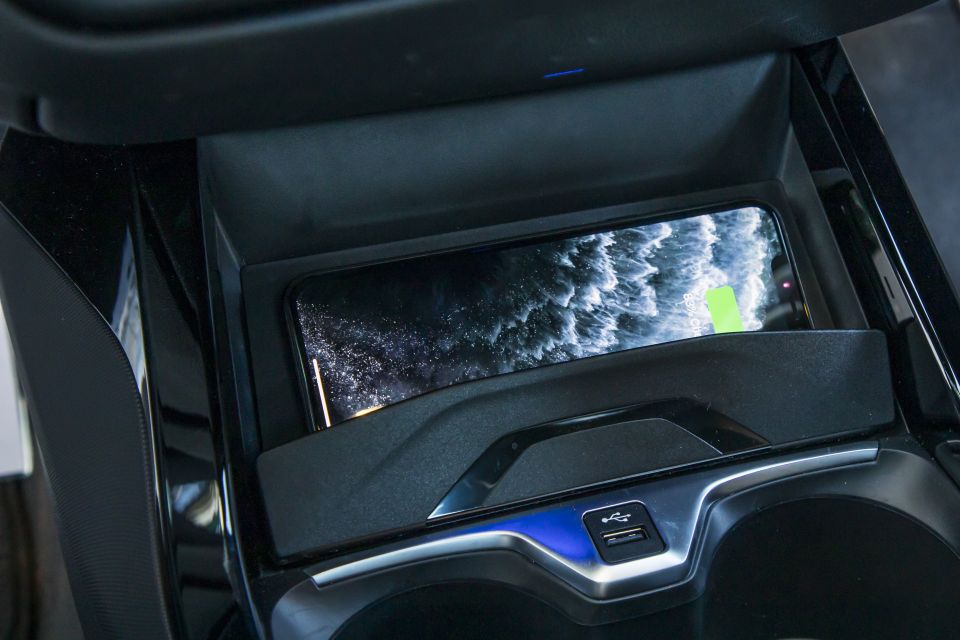

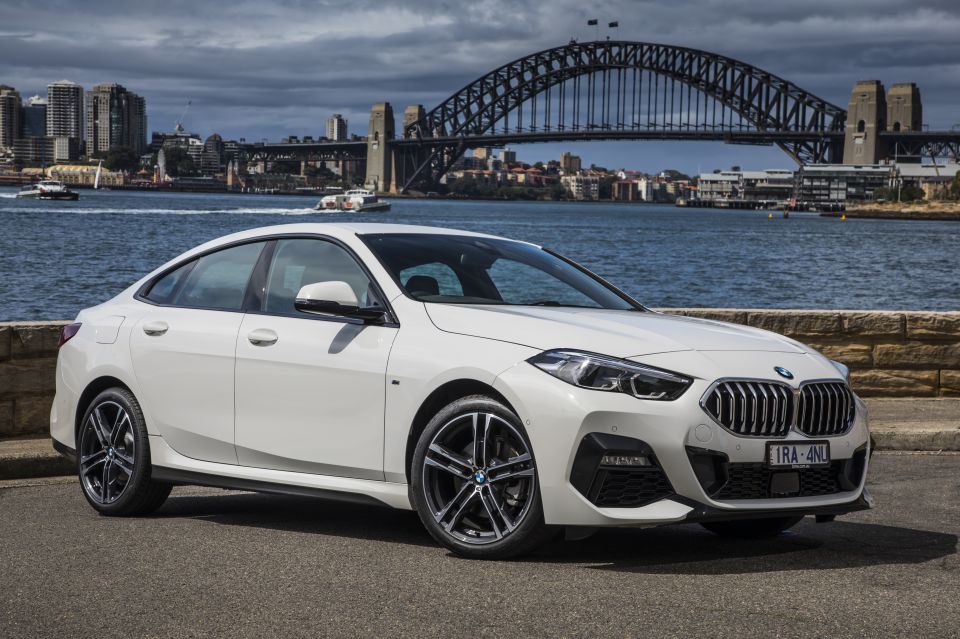
The design is guaranteed to be polarising, at least initially, but either way it’s still a head turner – gauging by the sheer number of folks who did just that on our drive from the Sydney CBD to the affluent Northern Beaches.
That aside, BMW has delivered a high-quality, muscular package boasting a thoroughly premium cockpit with a long list of creature comforts and technology to please the most prudent buyer.
It also drives exceptionally even in base trim, while the hotter M235i will surprise the avid enthusiast with its ability to carve corners with uncanny levels of roadholding and refinement.
Where expert car reviews meet expert car buying – CarExpert gives you trusted advice, personalised service and real savings on your next new car.


Alborz Fallah
5 Months Ago
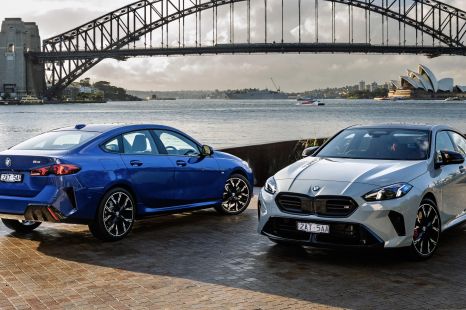

Max Davies
4 Months Ago
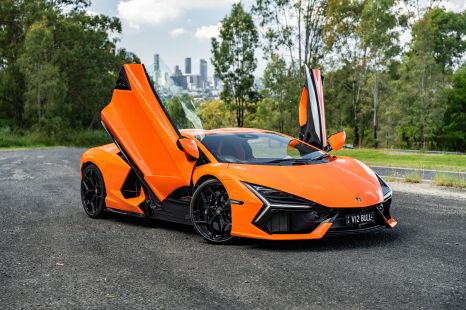

Alborz Fallah
1 Month Ago


James Wong
26 Days Ago


William Stopford
21 Days Ago


Paul Maric
15 Days Ago